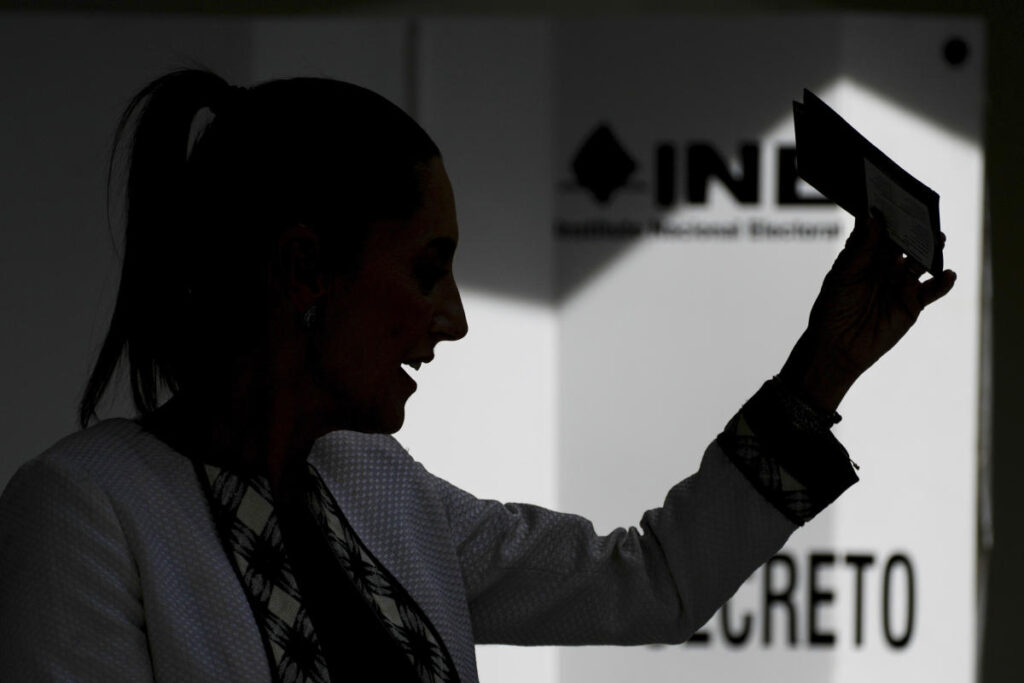MEXICO CITY (AP) — Claudia SheinbaumHis name will go down in Mexican history.
The candidate for the ruling party won the Mexican presidential elections Sunday marked a turning point in a predominantly conservative nation that has been ruled exclusively by men for more than two centuries.
Elsewhere in Latin America, women have led countries such as Argentina, Brazil, Bolivia, Chile, Guyana, Nicaragua, Honduras, Ecuador, El Salvador, Panama, Haiti and Costa Rica.
Mexican women were given the right to vote in 1953. No law prevented female candidates from holding office, but… sexism and ‘macho culture’ continue to permeate the country of 129 million inhabitants.
Prior to the current presidential race, in which Sheinbaum maintained a comfortable lead over an opposition candidate Xochitl Galvezonly two women had officially applied for the presidency of Mexico. Both failed.
In her bid to replace outgoing President Andrés Manuel López Obrador, Sheinbaum struggled constructs its own imageleaving many wondering if she can escape the shadows from her mentor.
Women currently lead several important Mexican institutions, such as the Senate, the Supreme Court and the National Electoral Institute. Mexico ranks third among Latin American countries with the most women in the national cabinet – 44% – and has 10 female governors among the 32 states.
However, in some native villages men still have the power.
Among the problems Mexican women face include femicide, or women being killed because of their gender, a gender employment gap and inadequate policies guaranteeing sexual and reproductive rights. Sheinbaum, 61, will have to discuss these after she takes power on October 1.
Here’s a look at the problems.
FEMICIDE AND GENDER VIOLENCE
Demonstrations on International Women’s Day on March 8 are painful reminders of the fact that many Mexican women disappear or are murdered every day.
According to UN Women, up to ten women are victims of femicide every day in Mexico. In 2023 the number reached 3,000.
Thousands of others have disappeared. In many cases, it is their mothers, who feel abandoned by the government, who have taken it upon themselves to search for them.
Most femicides go unpunished due to Mexico’s inefficient justice system, which often dismisses reported crimes or fails to properly investigate and prosecute them.
According to the National Institute of Statistics and Geography, more than 40% of Mexican women aged 15 or older say they have been victims of some form of violence in their lives.
During her campaign, Sheinbaum said she would repeat measures against gender-based violence implemented when she was mayor of the capital. They include the creation of an anti-feminism prosecutor and legislation that would force offenders to leave their homes.
“We transform, we are warriors who open paths for other women,” Sheinbaum said.
Despite this, Sheinbaum has been criticized by feminists and activists who claimed her government had no gender-related policies. Excessive use of violence against women during demonstrations has also been reported.
SEXUAL AND REPRODUCTIVE RIGHTS
Teenage pregnancies in Mexico are raising concerns.
According to official figures from 2021, the latest available, there were 147,279 births among adolescents between 15 and 19 years old, and 3,019 among girls under 15.
Mexico’s Supreme Court ruled in 2023 that national laws banning abortion are unconstitutional and violate women’s rights, but further state-by-state legal work is underway to eliminate all penalties.
Twelve of Mexico’s 32 states have decriminalized abortion, most in the past five years. A few more states allow abortion if the mother’s life is in danger, and it is legal nationwide if the pregnancy results from rape.
In most states where it has been decriminalized, advocates say they face continued challenges in making abortion safe, accessible and publicly funded.
Sheinbaum didn’t go into the topic during her campaign.
GENDER EMPLOYMENT GAP
According to official figures, 76% of Mexican men and only 47% of women have a job.
Of working women, 54% have informal jobs and spend almost 43 hours a week on household tasks. According to the Mexican Institute for Competitiveness, this limits the time women can spend in the labor market. Education and access to public transport are also determining factors.
Women generally earn less money than men. In Mexico City the difference is 6%, while in other states the difference can be as high as 25%.
___

